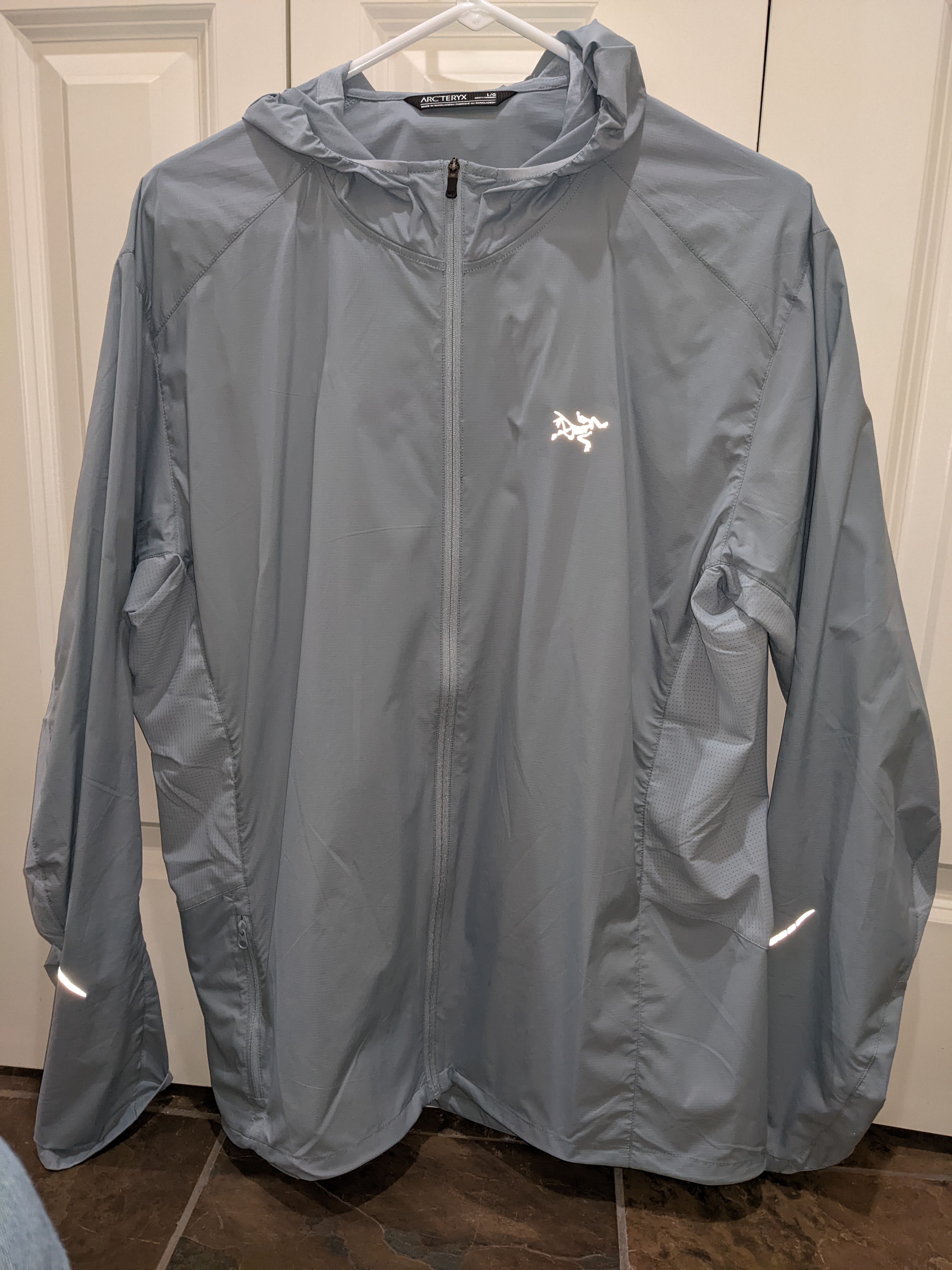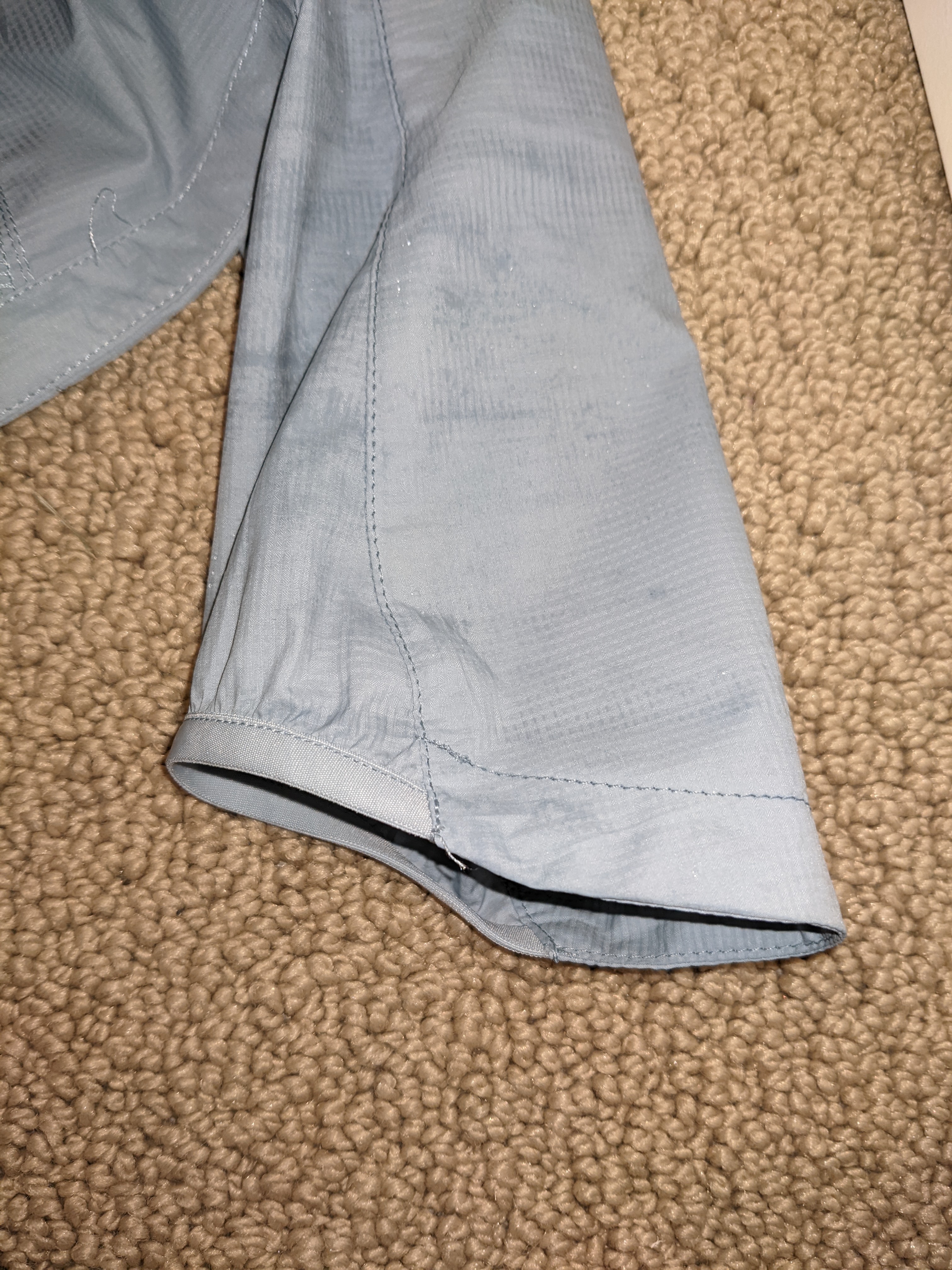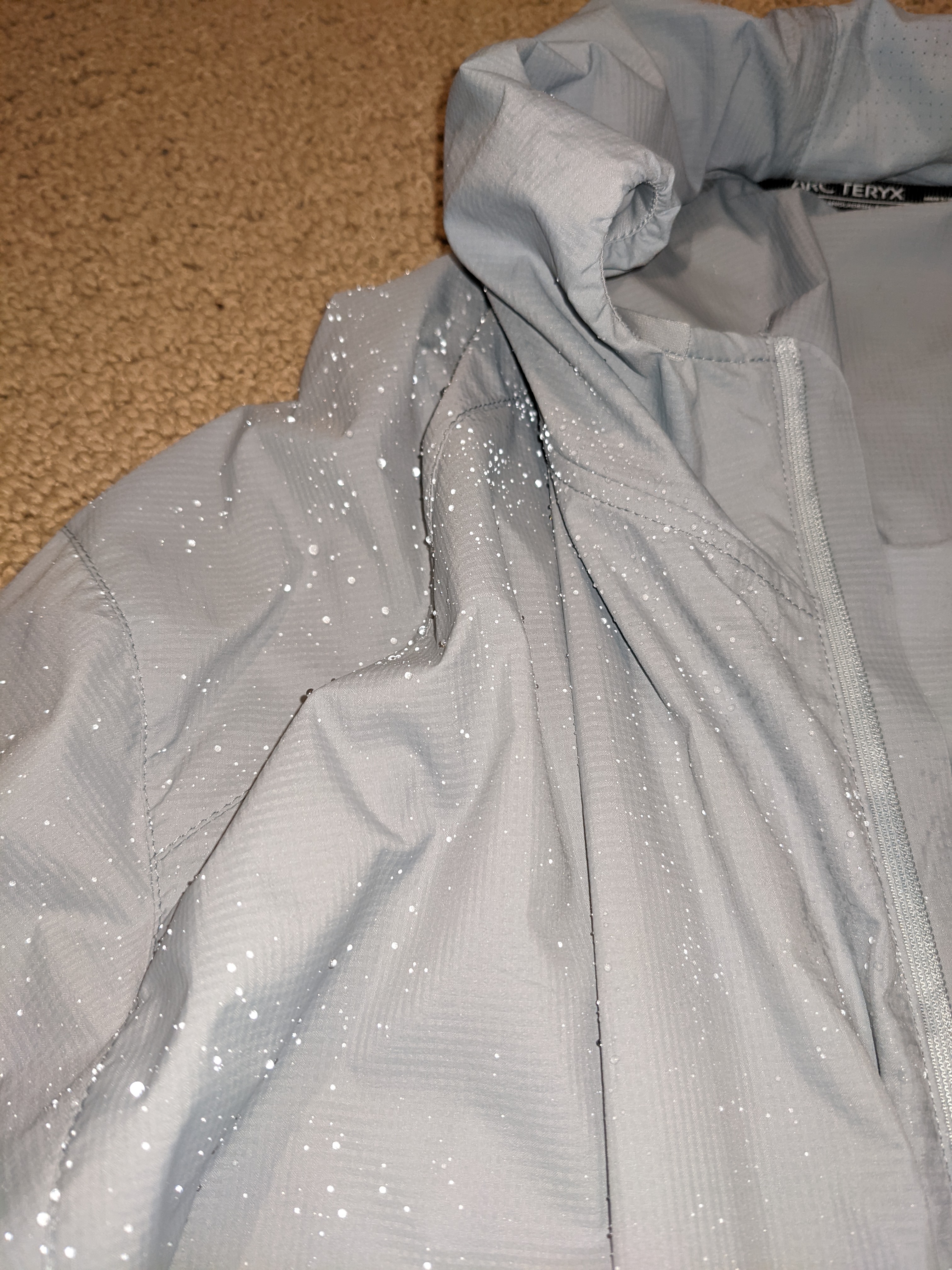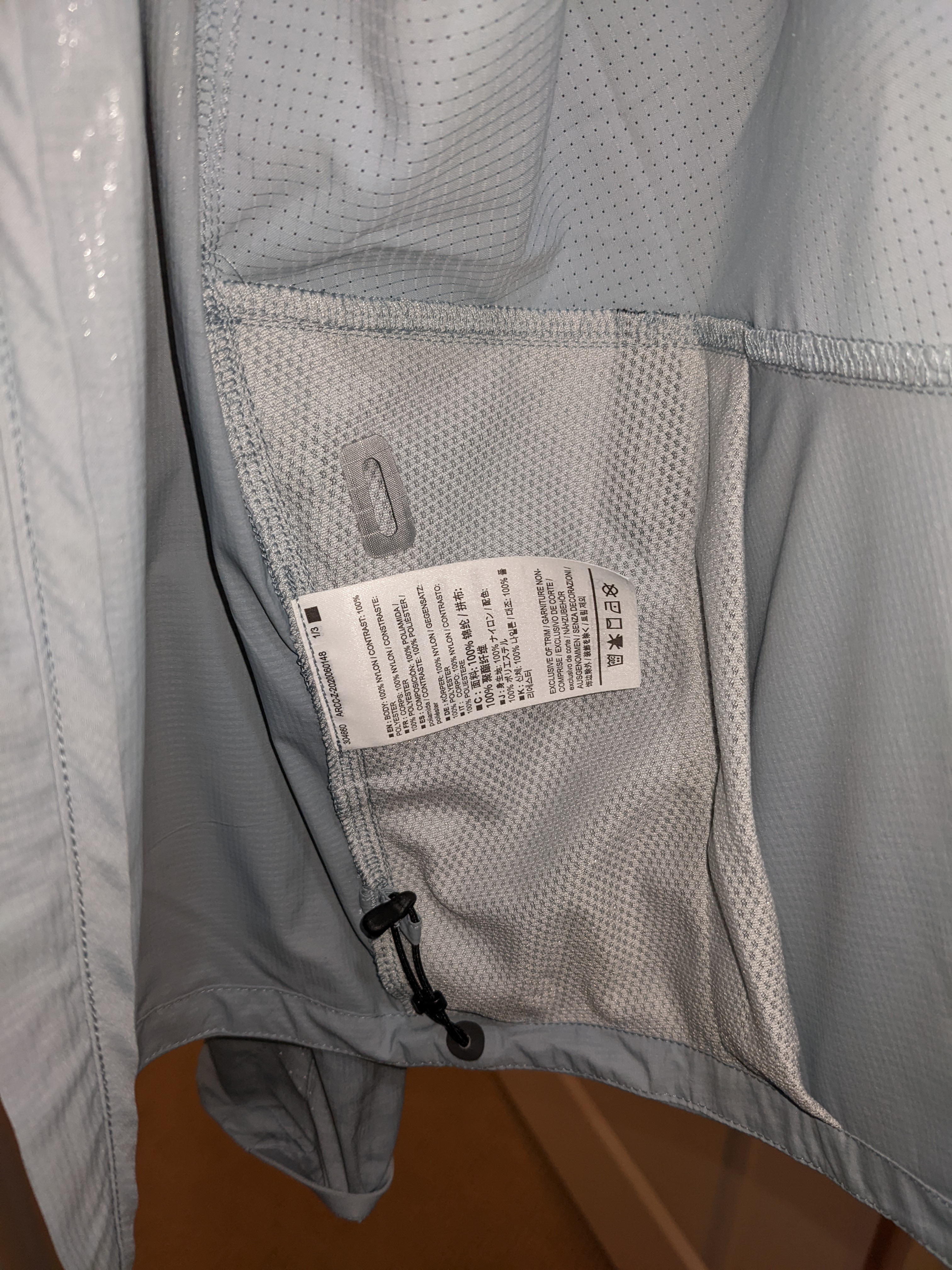Imaginative Realities
Cyber Security and Stray Thoughts
22 January 2022
Some Thoughts on the Arc'Teryx Incendo Hoody (2021)
by Chris

I can say after buying the Arc’Teryx Incendo Hoody Jacket, that I’ve learned a lesson. Lots of people in the outdoors community provide guides on when to buy a rain jacket versus a softshell jacket. There is some nuance there, and I’ve benefited from those posts. The lesson I’ve learned from buying a ‘wind jacket’ is that there is another consideration to this kind of talk: distinguishing a windshirt or wind jacket from a softshell jacket. I thought the overlap between those categories was so complete as to make the distinction meaningless. I was wrong. I’m kicking myself for not buying another Black Diamond Alpine Start Hoody.
But first, the BD Alpine Start Jacket
I’ve been running in an Alpine Start for the past five years, and came to love it as a “never take it off” layer. Or near enough, it was my go-to in Seattle weather.
Black Diamond didn’t bill the Alpine Start as a running jacket, but I’d read of many in the outdoors community who used it for running as well all the backcountry pursuits. So I hypothesized that it might be a “do everything” layer that I could run in and take hiking. It lived up to the hype. The softshell material was about the best balance I could find between breathability and weather protection for short runs. On the trail it was durable and breathed reasonably well depending on your layers. It’s true, the material occasionally seemed as though it let in too much air, particularly when standing around. But I never had the impression it was designed for hanging out at camp.
As evidence for its enduring usefulness, you don’t have take my word for it: David Chenault still talks about his after buying one in 2014.
For my birthday this year, I decided to change it up and buy a dedicated running jacket. Running has come to play a much bigger role in my life, and I figured that a jacket designed specifically for running might offer better features or increased breathability.
Enter the Arc’Teryx Incendo Hoody. I’ve run in the Incendo for about three months now, and I’ve developed some disappointments for such an expensive garment. For the record I currently run about 15 miles a week in urban settings. I tend to run hot when I exercise, so I favor synthetics over wool in running and hiking. I purchased the Incendo on sale.
Arc’Teryx claims the Incendo weighs 4.4 oz on their website. According to my scale, its 4.85 oz. For comparison, the Alpine Start is heavier at 7.88 oz on my scale.
Breathability
First, lets talk about the fabric. According to Arc’Teryx the jacket is primarily made out of something they call Lumin, a fabric made of 100% nylon at 49 g/m² in a 20D ripstop. Its got a DWR treatment, and the jacket also has mesh polyester panels running under the arms. The Lumin fabric feels pretty similar in texture and weight to the nylon yarns of a Patagonia Houdini jacket. I don’t have any numbers on the g/m2 of the newer Houdinis, so that is subjective.
The fabric has a light ‘hand;’ it has a bit of a sheer quality. And, despite its light overall weight, the Lumin fabric isn’t as breathable as the Alpine Start softshell fabric.
The result for breathability is a surprise. The Lumin fabric simply doesn’t seem to pass air or vapor very well. The designers addressed this problem by incorporating the polyester mesh panels under the arms. But these panels don’t balance out the Lumin sections for my style of running. The mesh panels certainly help, but are insufficient regarding the overall passage of air and moisture vapor in the jacket as a system. For my purposes more mesh or a different nylon would have been a better choice.
Features/design
The hood folds down into a collar by rolling into itself and snapping with single, low profile, snap set dead center in the collar behind the neck.

This is a clever design, but I’ve had mixed results securing the hood this way during a run. Sometimes it stays put rolled up and other times it has come undone. Not the most foolproof option. The alternatives aren’t great either: if you leave the hood loose at your back, it’ll balloon in any light wind. In still conditions it is no problem loose. If you tuck the hood on the inside, between your back and the jacket, it’ll still come free as you run. The nylon material is so light that it easily works up your back and the edges catch the wind to pull the remainder out.

There is a low profile snap, hidden beneath the primary zipper, about 2/3 up from the hem. I’m a fan of this feature. Using the snap you can unzip the jacket, virtually to the hem, without having the jacket gape open was you run. Because the jacket isn’t very breathable, this becomes critical feature to dump heat. I find myself regularly using the snap in the last quarter of my runs (in addition to pushing up the sleeves).

At the sleeve cuff there is a half-and-half design. There is a gusset on the bottom half of the cuff. The top half has a non-gusseted hem. These halves are not symmetrical; the top half has an oblong design. A measure of fabric extends beyond the cuff over the top of your hand, kind of like the plate armor knights wore from Europe of old. Extra fabric means extra protection in the wind, though I find the times when I am thankful for this feature are rare. A full gusset with the ability to adjust the as I slide the sleeves up my arms would have been a more pragmatic choice. As it stands, when you slide these cuffs up, the non gusseted side constricts against your skin. Nylon, when spread directly against patches of your sweating skin, bears a remarkable similarity to the feeling of wearing a garbage bag when you exercise.

I’ve found the DWR treatment to be solid. Like any garment, the DWR is overwhelmed in areas where the fabric rubs against itself. This happens for me mostly on the arms when I’m pushing them up or just trying to catch a look at my watch. Pretty typical for DWR and the garments I’ve used.

The jacket has an interior pocket for a phone with a earphone cord port. The jacket will fold up into the pocket for compactness when storing on longer runs. It’s got an interior divider inside the pocket and a loop for when you stow the jacket. I haven’t used any of these features, so I can’t comment on their effectiveness.
Lastly, I’m convinced this gray-blue color is going to be what our kids laugh at when they see us in photos of the 2020s. My 2021 phone and running shoes are the exact same color (Google calls it “barely blue”). It’ll be like that shade of brown you see in photos of the 70s. It’s just o.k.
Wrapping up
For my style of running, the Incendo is suited to a narrower range of conditions than the Alpine Start. It seems to be a jacket that is good for wind below 45*. In Seattle, a majority of my runs tend to be above that threshold. So I’d categorize the Incendo as the kind of piece that you’d really only bring out at the start of your run. As you heat up, and start to get into mid-run rhythm, you’d probably open up the front zip and pull up the sleeves (all which come with issues that you have to faff) or just put it away (easier). Otherwise, it is a jacket really designed for when conditions become too foul. It all comes down to the Lumin fabric, I scratch my head as to why Arc’Teryx chose it for a high exersion activity like running.
Next time I’m buying a softshell.
tags: